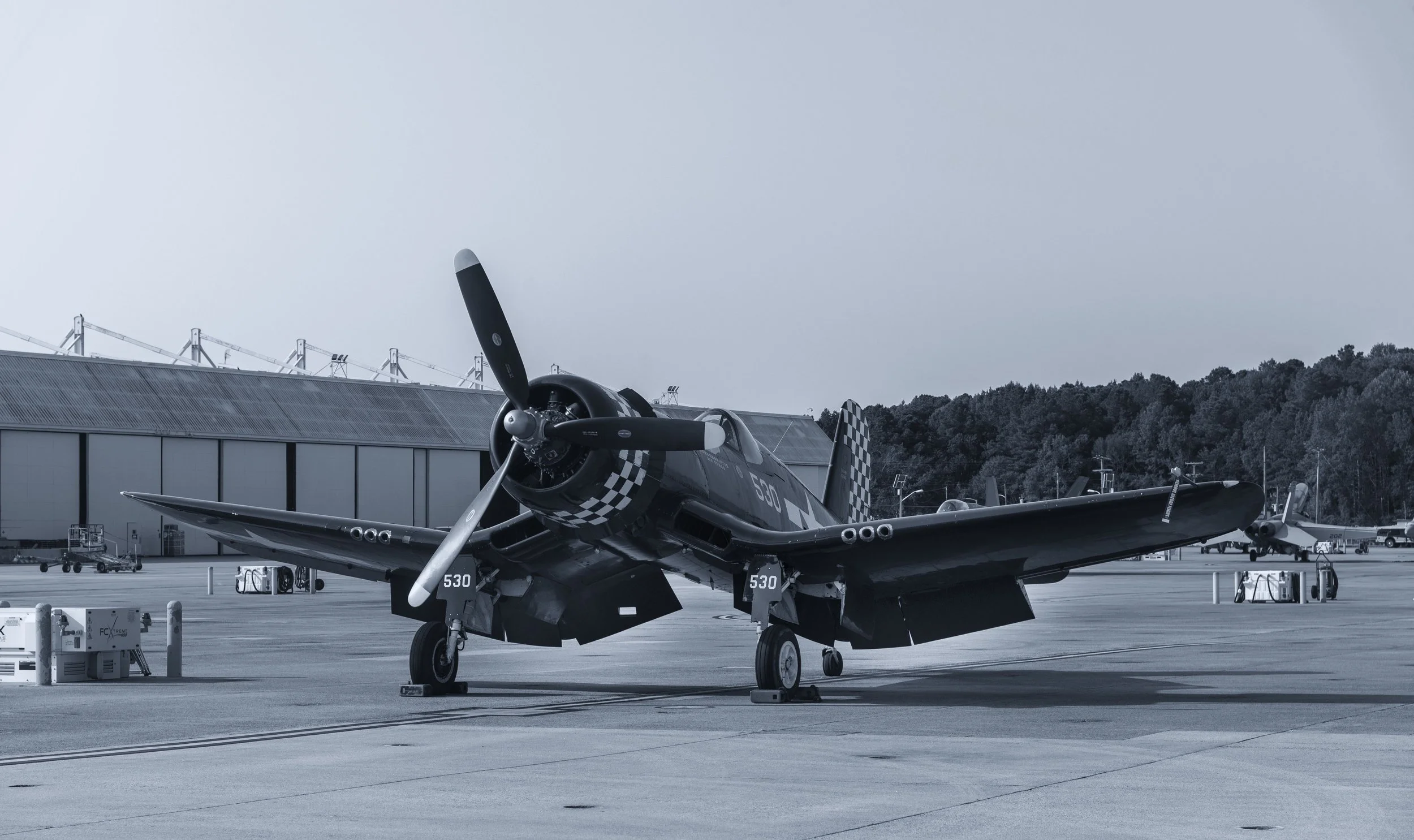Whistling Death: The Legacy of the Vought F4U Corsair
History of the Vought F4U Corsair
The Vought F4U Corsair, a renowned American fighter aircraft, was first flown in 1940 and became operational in 1942. Designed and produced by Vought Aircraft, the Corsair was primarily used during World War II and the Korean War. Its distinctive inverted gull wing and powerful Pratt & Whitney R-2800 Double Wasp engine gave it exceptional performance, making it one of the most formidable fighters of its time.
The Corsair was originally intended for carrier operations. Still, its long nose, which reduced visibility during landing, led to initial deployment with land-based Marine Corps squadrons. It quickly earned a reputation for its speed, agility, and firepower, excelling in dogfights against Japanese Zero fighters. The Corsair's rugged design also made it effective in ground attack roles.
Over 12,500 Corsairs, including 16 different variants, were built during its production until 1953. The F4U-1 was the first production model, while the F4U-4, introduced in 1944, featured improved performance with a more powerful engine and enhanced armament. The F4U-5 and subsequent variants saw action in the Korean War, showcasing advancements such as radar and improved all-weather capabilities.
The Corsair had several nicknames. Among the most well-known was "Whistling Death," a moniker given by the Japanese due to the distinctive whistling sound made by the aircraft's wing-root air intakes during high-speed dives. The Corsair was also affectionately called "Bent-Wing Bird" or "Ensign Eliminator" by U.S. Navy and Marine Corps pilots, the latter nickname referencing the aircraft's initial difficulty in carrier landings, which led to a high accident rate among inexperienced pilots. These nicknames reflect both the fearsome reputation and the challenging handling characteristics of the Corsair.
FG-1D Corsair Variant
The FG-1D Corsair, produced by Goodyear, was a variant of the Vought F4U Corsair. Manufactured under license during World War II, the FG-1D was nearly identical to the F4U-1D but featured some differences to streamline production. It lacked the carrier arrestor hook, as many were intended for land-based operations. The FG-1D also had simplified equipment and often omitted the folding wing mechanism to expedite manufacturing. Despite these changes, it maintained the Corsair's powerful performance and rugged design, contributing significantly to the U.S. Navy and Marine Corps' success in the Pacific Theater.
FG-1D 530
The FG-1D Corsair number 530, operated by the Commemorative Air Force (CAF), is a cherished piece of aviation history. Built by Goodyear during World War II, this aircraft is one of the many FG-1D variants produced to supplement Vought's manufacturing capabilities. After the war, many Corsairs were sold as surplus or scrapped, but number 530 found a second life in civilian hands.
Corsair number 530 is meticulously maintained by the CAF, an organization dedicated to preserving and showcasing historical military aircraft. The CAF acquired this Corsair to educate the public about these aircraft's pivotal role in achieving air superiority during WWII and the Korean War.
Corsair 530 frequently participates in airshows and historical reenactments, demonstrating its impressive speed and maneuverability. Pilots flying the Corsair provide thrilling displays, showcasing the power and agility that made the Corsair a legend. Through these efforts, the CAF ensures that the legacy of the FG-1D and the brave pilots who flew them remain alive for future generations, allowing people to experience a tangible connection to aviation history.
Sources:
CAF Corsair FG-1D, Commemorative Air Force, n.d.
Vought F4U-1D Corsair, National Air and Space Museum, n.d.



